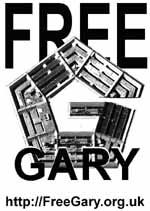The idea that the Bilderberg Group is behind the creation of a mysterious future World Government has been spreading for years. Having had access to the archives of this very secret club, Thierry Meyssan shows that this belief leads in a false direction, serving to mask the true identity and function of the Group. In reality, the Bilderberg Group is a creation of NATO. It aims to influence key leaders on a global scale and, through them, to manipulate public opinion to get it to embrace the ideas and actions of the Northern Atlantic Alliance.
- First meeting of the Group, at the Bilderberg hotel (1954)
Every year since 1954, over one hundred of the most prominent personalities of Western Europe and North America meet - behind closed doors and under maximum security - within the Bilderberg Group. This exclusive seminar lasts for three days and almost nothing of the debates filters to the outside world.
Since the breakup of the Soviet Union, numerous journalists have taken an interest in this secretive, elitist organization. Certain authors have seen it as the beginning of a World Government, responsible for the major political, cultural, economic and military decisions of the second half of the twentieth century. This interpretation has also been voiced by Fidel Castro, but it has never been confirmed nor invalidated by any solid facts.
In order to find out what the Bilderberg Group is or isn’t, I searched for documents and first hand witnesses. I obtained access to all of its records for the period 1954-1966 and numerous later documents, and I was able to talk with a former participant that I’ve known for years. No other journalist to date, including the authors who have popularized today’s stereotypes, has had access to this wealth of internal documents of the Bilderberg Group.
Here’s what I discovered…
The first meeting
70 personalities from 12 different countries attended the first meeting of the Group. It was a three-day seminar, from May 29 to 31, 1954, near Arnhem (Netherlands). The guests were housed in two nearby hotels, but the debates were held in the Bilderberg Hotel, which gave the Group its name.
The invitations with a letterhead from the Soestdijk Palace are intriguing: "I earnestly request your presence at the informal International Conference, to be held in the Netherlands in late May. This conference wishes to explore a number of issues of great importance for Western civilization and is intended to stimulate mutual understanding and goodwill through a free exchange of views." The invitations were signed by the Prince Consort of the Netherlands, Bernhard zur Lippe-Biesterfeld, and accompanied by several pages of administrative information concerning transportation and accommodation. At most, we learn that the delegates originated from the United States and 11 from Western Europe, and that 6 sessions of 3 hours each were scheduled.
Given the Nazi past of Prince Bernhard (who had served in the SS cavalry until his marriage in 1937 to Princess Juliana) and in the context of McCarthyism in the U.S., it’s clear that the "issues of great importance for Western civilization" revolved around the struggle against communism.
Once there, the anticipation of the guests was mitigated by the two chairmen: U.S. entrepreneur John S. Coleman and outgoing Belgian Minister of Foreign Affairs Paul van Zeeland. The first was an active partisan of free trade and the second a supporter of the European Defense Community (EDC) [1]. Last but not least, at the far end of the table (see photo) sat Joseph Retinger, the intellectual influence behind the British. All this suggests that the Dutch and British monarchies sponsored this meeting to support the European Defense Community and the economic model of free-market capitalism against the anti-Americanism that the Communists and the Gaullists were promoting.
However, appearances are deceiving. The goal was not to campaign for the EDC, but to mobilize the elite for the Cold War.
His Royal Highness, Prince Bernhard, was chosen to convene this conference because his status as a prince consort would give it a Stately character without being formal. In fact, he was used to hide the real sponsor: an inter-governmental organization which intends to manipulate the governments of some of its Member States.
John S. Coleman was not yet the President of the Chamber of Commerce of the United States, but he had already created the “Citizen’s Committee for a National Trade Policy” - CCNTP. According to him, absolute free trade, that is to say, the renunciation of all customs duties, would allow countries allied with the United States to increase their wealth and finance the European Defense Community (in other words, rearm Germany and integrate its potential military power within NATO).
However, the documents in our possession show that the CCNTP was a “Citizen’s” committee in name only. This is actually an initiative of Charles D. Jackson, the White House psychological warfare adviser. The operation was controlled in reality by William J. Donovan, the former commander of the OSS (the U.S. intelligence service during the war), now in charge of building the American branch of the new secret service of NATO, Gladio [2].
...MORE HERE...


















No comments:
Post a Comment